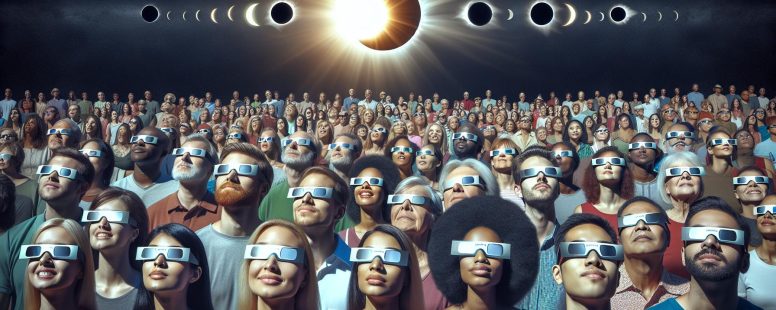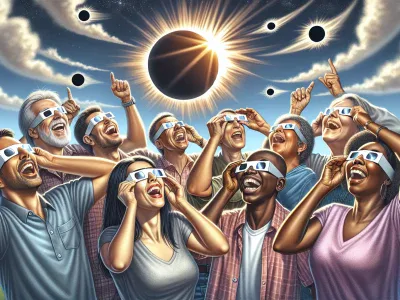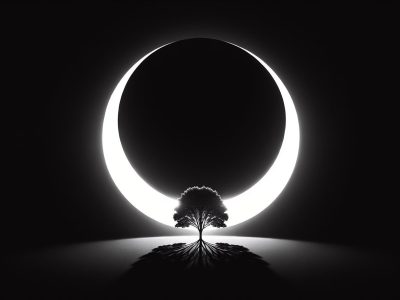Lunar Versus Solar Eclipse: Differences, Visibility, and Safety Tips
Imagine standing under a vast, star-studded sky when suddenly, the moon takes on a mysterious reddish hue or the sun is momentarily veiled, casting an eerie twilight across the land. These celestial events, known as lunar and solar eclipses, offer a breathtaking spectacle that captures our imagination and curiosity. But have you ever wondered what sets these two phenomena apart?
Lunar and solar eclipses, though both captivating, differ significantly in their occurrence and appearance. A lunar eclipse paints the moon in shades of copper and crimson as it slips into Earth’s shadow, while a solar eclipse transforms day into night when the moon crosses paths with the sun. Understanding these differences not only enriches your appreciation of these natural wonders but also deepens your connection to the cosmic dance above. So, what makes each eclipse unique, and why do they happen? Let’s begin on this celestial journey to uncover their secrets.
Understanding Eclipses
In celestial terms, an eclipse refers to an event where one heavenly body moves into the shadow of another. When you observe the night or day sky, these events captivate with their astonishing beauty and mystery.
Lunar Eclipse
A lunar eclipse happens when the Earth blocks sunlight from reaching the moon, leading to a distinctive red hue often called a “blood moon.” The Earth’s alignment between the moon and the sun is essential for this phenomenon to occur, resulting in either a total, partial, or penumbral eclipse. During a total lunar eclipse, the moon entirely passes through Earth’s central shadow, creating the most striking visuals.
Solar Eclipse
A solar eclipse takes place when the moon passes between the sun and Earth, temporarily darkening certain areas during the day. This intriguing event can be a total, partial, or annular eclipse. In a total solar eclipse, the moon completely covers the sun, allowing you to see the sun’s outer atmosphere, known as the corona. Safety is crucial when viewing a solar eclipse because direct exposure to the sun’s rays can damage the eyes.
Key Differences
While both types of eclipses stem from the alignment of the sun, moon, and Earth, their occurrences vastly differ in frequency and visibility. Lunar eclipses are visible from anywhere on the night side of Earth, while solar eclipses are only visible along a narrow path. You could wait several years to witness a total solar eclipse from your location, but lunar eclipses occur more frequently and are simpler to observe.
Embed these celestial events into your understanding of Earth’s motion, and you’ll find a deeper appreciation for the universe’s orchestrated dance.
What Is A Lunar Eclipse?
A lunar eclipse captivates observers when Earth moves between the sun and the moon. Earth’s shadow envelops the moon, casting a reddish tint across its surface.
Types Of Lunar Eclipses
Lunar eclipses come in three forms, each distinctly captivating. A total lunar eclipse occurs when Earth’s umbra completely covers the moon, turning it a deep red hue—a phenomenon known as a “Blood Moon.” In a partial lunar eclipse, only part of the moon enters Earth’s umbra, causing part of the moon to darken visibly. During a penumbral lunar eclipse, the moon passes through Earth’s penumbral shadow, creating a subtle shading effect that’s often hard to notice.
How Often Do Lunar Eclipses Occur?
Lunar eclipses typically occur two to four times a year, but not all of them are total eclipses. The frequency depends on the alignment of the sun, Earth, and the moon. For a lunar eclipse to be visible, the moon must be full, and the event can be observed from anywhere on Earth’s night side, making it accessible to a wide audience. The rarity of a “Blood Moon,” but, often generates heightened interest and draws significant attention from skywatchers.
What Is A Solar Eclipse?
A solar eclipse occurs when the moon moves directly between the Earth and the sun, casting a shadow over Earth. This celestial event temporarily dims daylight and can reveal the sun’s corona during a total eclipse.
Types Of Solar Eclipses
Solar eclipses come in three forms: total, partial, and annular. During a total solar eclipse, the moon completely covers the sun, allowing you to see the sun’s corona, which is the outer atmosphere. In a partial solar eclipse, only part of the sun is obscured, resulting in a partial shadow visible from Earth. Annular solar eclipses occur when the moon is farthest from Earth in its orbit, creating a “ring of fire” effect, where the sun’s edges are visible around the moon.
Frequency Of Solar Eclipses
Solar eclipses happen around two to five times each year, though total solar eclipses are less common, occurring approximately once every 18 months. The path of totality, where a total solar eclipse is visible, is quite narrow, making it a rare event to witness for many. In contrast, partial and annular eclipses are more widely visible, depending on the specific alignment and the observer’s location. This infrequency makes observing a total solar eclipse a memorable experience for many skywatchers.
Comparing Lunar And Solar Eclipses
Lunar and solar eclipses, even though both being celestial events, differ significantly in their visibility and duration, safety and viewing conditions, and cultural and historical significance.
Visibility And Duration
Lunar eclipses are visible from anywhere on Earth’s night side, making them more accessible. In contrast, to witness a solar eclipse, you must be in the narrow path where the moon’s shadow falls. Lunar eclipses can last from a few minutes to over an hour, while solar eclipses generally last only between a few seconds and just over seven minutes for totality. The rarity of conditions for total solar eclipses aligns with their shorter duration.
Safety And Viewing Conditions
Viewing conditions for lunar eclipses pose no harm to your eyesight, allowing for safe, direct viewing without protective gear. On the other hand, solar eclipses require special safety precautions because staring directly at the sun can cause serious eye damage. Viewing a solar eclipse safely typically involves using eclipse glasses or a pinhole projector. Ensuring proper eye protection is crucial during solar eclipses due to the intensity of sunlight exposure.
Cultural And Historical Significance
Throughout history, eclipses have held significant cultural and historical importance. Many ancient societies interpreted them as omens or messages from the gods. Lunar eclipses, often associated with a “Blood Moon,” are frequently tied to myths and legends due to their dramatic appearance. Solar eclipses have also inspired awe and fear, influencing historical events and folklore around the world. The impact of these celestial events continues to intrigue and fascinate humanity, showcasing their lasting imprint on culture and history.
Scientific Importance Of Eclipses
Eclipses provide invaluable opportunities for scientific investigation and discovery, revealing insights into the universe’s intricacies. During a total solar eclipse, the sun’s corona becomes visible, a rare chance for astronomers to study its structure and dynamics. This outer atmosphere, typically obscured by the sun’s brightness, holds clues about solar winds and magnetic fields impacting Earth (NASA, 2020).
Lunar eclipses offer a different spectrum of scientific interest. When the Earth’s atmosphere refracts sunlight onto the moon’s surface, researchers observe changes in the reflected light to better understand atmospheric composition. By analyzing these changes, scientists gain information about particulates and gases in Earth’s atmosphere (ScienceDirect, 2019).
Eclipses also impact biological behavior in various species; for instance, some flowering plants may close during solar eclipses, while nocturnal animals emerge prematurely. These unexpected behaviors offer avenues for biological research, helping to uncover responses to changes in light and temperature (Smithsonian, 2021).
Data from eclipses contribute to refining our understanding of orbital mechanics. By observing eclipse timings and paths, scientists can test models of celestial motion and improve predictions of future eclipses (Royal Astronomical Society, 2021). The precise calculations enhance our knowledge of the intricacies of gravitational interactions among celestial bodies.
Your interest in eclipses can deepen your appreciation for their scientific value. Whether viewing these phenomena or contributing to citizen-science projects, you’ll engage with a process that’s shaped by millennia of astronomical study.
Conclusion
Exploring the wonders of lunar and solar eclipses reveals a world of celestial beauty and scientific intrigue. Each eclipse type offers unique experiences and insights, from the mesmerizing “Blood Moon” during a total lunar eclipse to the awe-inspiring corona of a total solar eclipse. Understanding these phenomena enhances your appreciation of their rarity and significance. By safely observing these events, you not only witness the grandeur of the cosmos but also contribute to the collective knowledge of our universe. Embrace the opportunity to engage with these fascinating occurrences and deepen your connection to the mysteries of the sky.
- RFP Versus RFQ: Understanding the Differences - November 28, 2025
- Cyst Versus Tumor: Understanding the Differences - November 28, 2025
- Difference Between Extra and Background Actor - November 28, 2025







